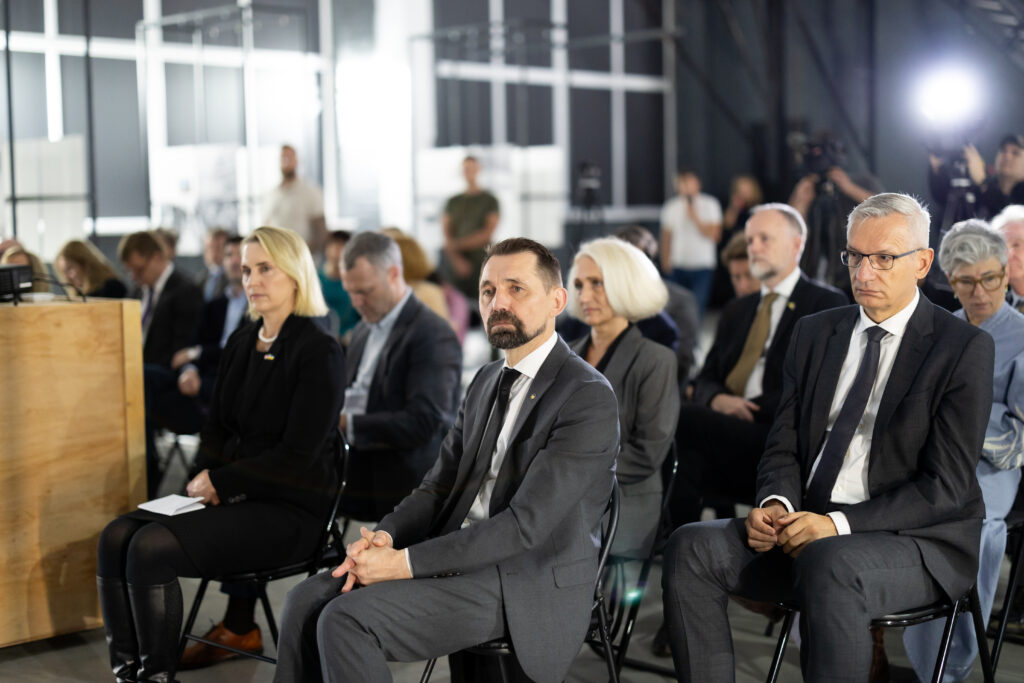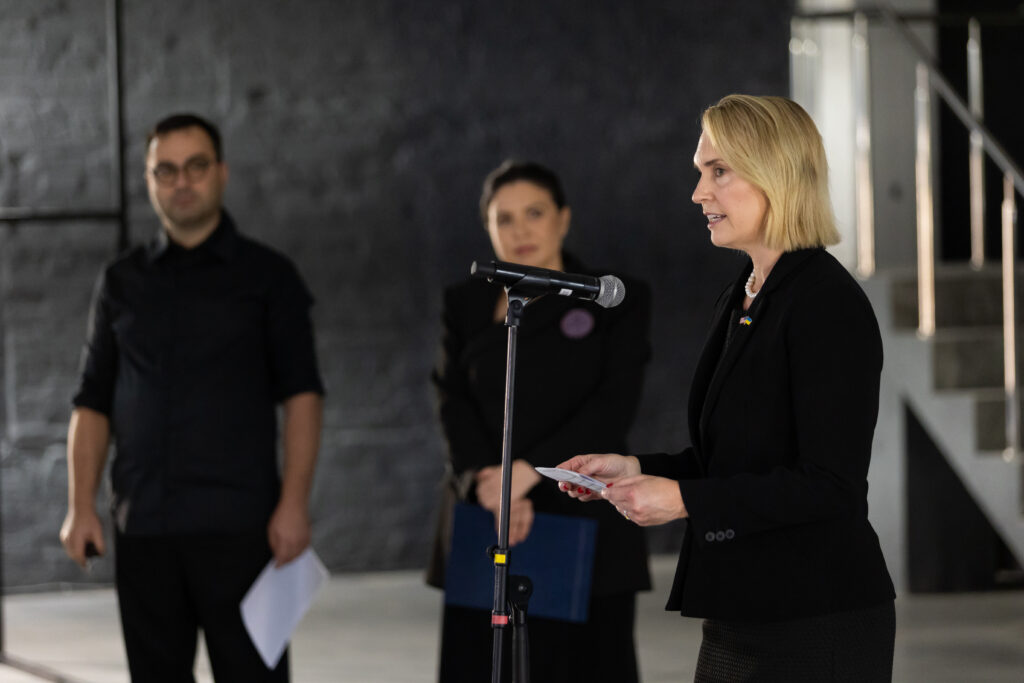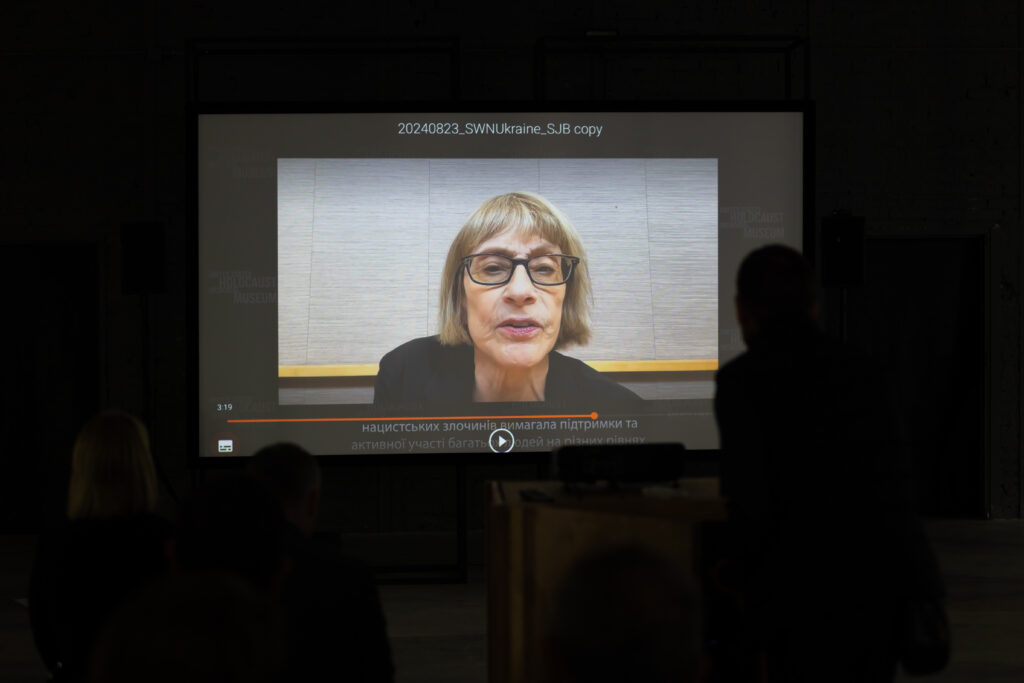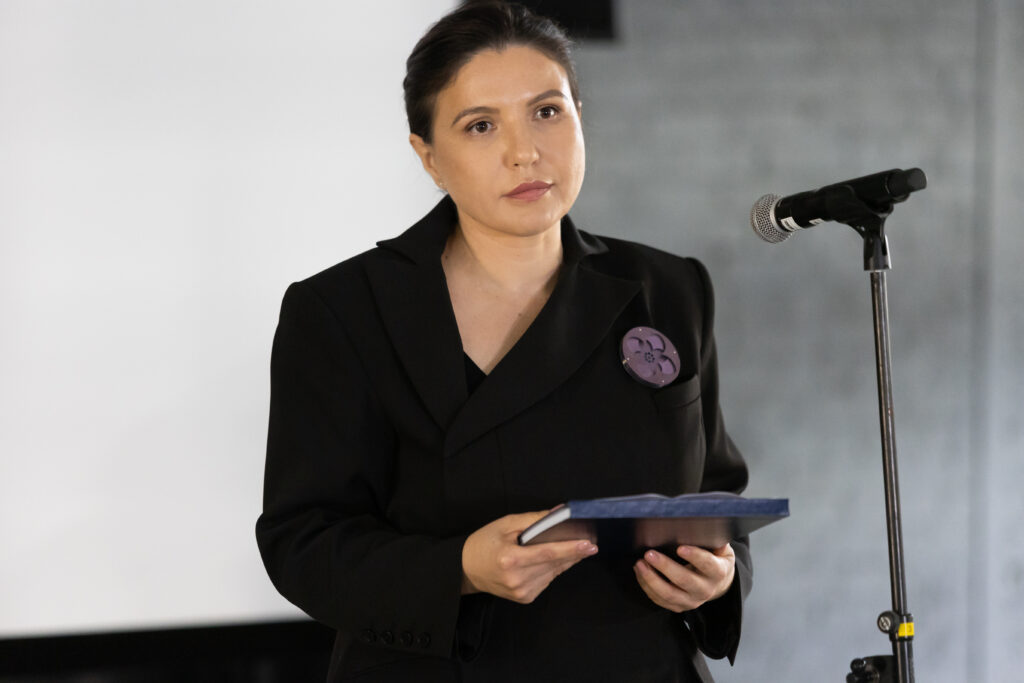On 29 September, the day of the Babyn Yar tragedy, the travelling exhibition ‘Someone Were a Neighbours: Choice, Human Behaviour, the Holocaust’ presented by the United States Holocaust Memorial Museum in cooperation with the National Historical and Memorial Reserve «Babyn Yar». The event was attended by Minister of Culture of Ukraine Mykola Tochytskyi, Ambassador Extraordinary and Plenipotentiary of the United States to Ukraine Bridget Brink, Ambassador Extraordinary and Plenipotentiary of the State of Israel to Ukraine Michael Brodsky, and diplomatic representatives from more than 20 countries.

The exhibition addresses one of the central questions about the Holocaust: how was the Holocaust possible? The responsibility of Adolf Hitler and other Nazis is undeniable, but they depended on countless others. What role did ordinary people play? Why did most ordinary people support the Nazi crimes or remain silent about them? Why were there so few who helped the victims?
Understanding that the Holocaust was made possible not only by the Nazi leadership and followers, but also because ordinary people in Germany and across Europe were motivated to acquiesce or collaborate in the genocide for various reasons is critical to understanding its lessons.
The Holocaust reminds us that the unthinkable is always possible. It also reminds us that people always have more power than they realise, for better or for worse. The museum hopes that this exhibition will inspire people to think critically about their personal power and, more importantly, to use it to take responsibility for shaping a better future.

‘The purpose of this exhibition is to remind us of how the ‘tacit consent’, indifference or active participation of ordinary people made possible horrific crimes against humanity. Crimes that we unfortunately still face today. During the 10 years of war, we have witnessed numerous atrocities committed by Russians in Ukraine. Crimes that require a fair assessment by the international community. Crimes for which they must be held accountable. Crimes that remind the world of the unlearned lessons of the Holocaust,’ Mykola Tochytskyi, Minister of Culture and Strategic Communications, addressed the audience.

‘Today we must act against all forms of anti-Semitism, racism and bigotry. When the dignity of any human being is threatened, we must unite in solidarity, compassion and unwavering determination. After the Holocaust, those who witnessed its tragedy said: never forget, never again,’ said U.S. Ambassador to Ukraine Bridget Brink.

‘Our exhibition explores the roles and responsibilities of ordinary people across Europe during the Holocaust,’ said Sarah J. Bloomfield, Director of the United States Holocaust Memorial Museum. ‘Someone Was a Neighbour explores the choices made by individuals and the reasons for those choices. People across Europe watched, toed the line, or collaborated. Only a few resisted. However, their actions show that choice was always possible. The exhibition encourages visitors to think about human behaviour and the motives behind people's choices.’

Roza Tapanova, head of Babyn Yar, thanked her colleagues from the United States Holocaust Memorial Museum for the opportunity to introduce the exhibition to Ukrainians and stressed the importance of involving children and youth in such projects: ‘Being human is difficult, but it is possible. We teach our children that human life is the highest value regardless of race, religion, or beliefs. I am grateful to our colleagues from the United States for the excellent exhibition project, methodological recommendations, and materials that will help us reach the widest possible audience among pupils and students.’
The exhibition will be on display at the exhibition centre of the Babyn Yar National Historical and Memorial Reserve until 31 December 2024.
The exhibition is organised by the William Levin Family Institute of the United States Holocaust Memorial Museum. The exhibition is made possible by support from the David Berg Foundation, the Oliver Stanton Foundation, the William and Sheila Conar Foundation, the Blanche and Irving Laurie Foundation, the Benjamin and Sima Pulier Charitable Foundation, and the Cy and Laurie Sternberg Charitable Foundation, as well as the Lester Robbins and Sheila Johnson Robbins Travel and Special Exhibitions Fund, established in 1990.
The United States Holocaust Memorial Museum, a nonpartisan, federal, educational institution, is America's national memorial to the victims of the Holocaust, dedicated to ensuring that the memory of the Holocaust is permanent, understandable, and relevant. By addressing the history of the Holocaust, the museum encourages leaders and people around the world to critically reflect on their own role in society, to confront anti-Semitism and other forms of hatred, to prevent genocide, and to uphold human dignity.
The exhibition centre of the Babyn Yar National Historical and Memorial Reserve at 46 Yuriy Illienko St. is open daily from 10:00 to 19:00.
